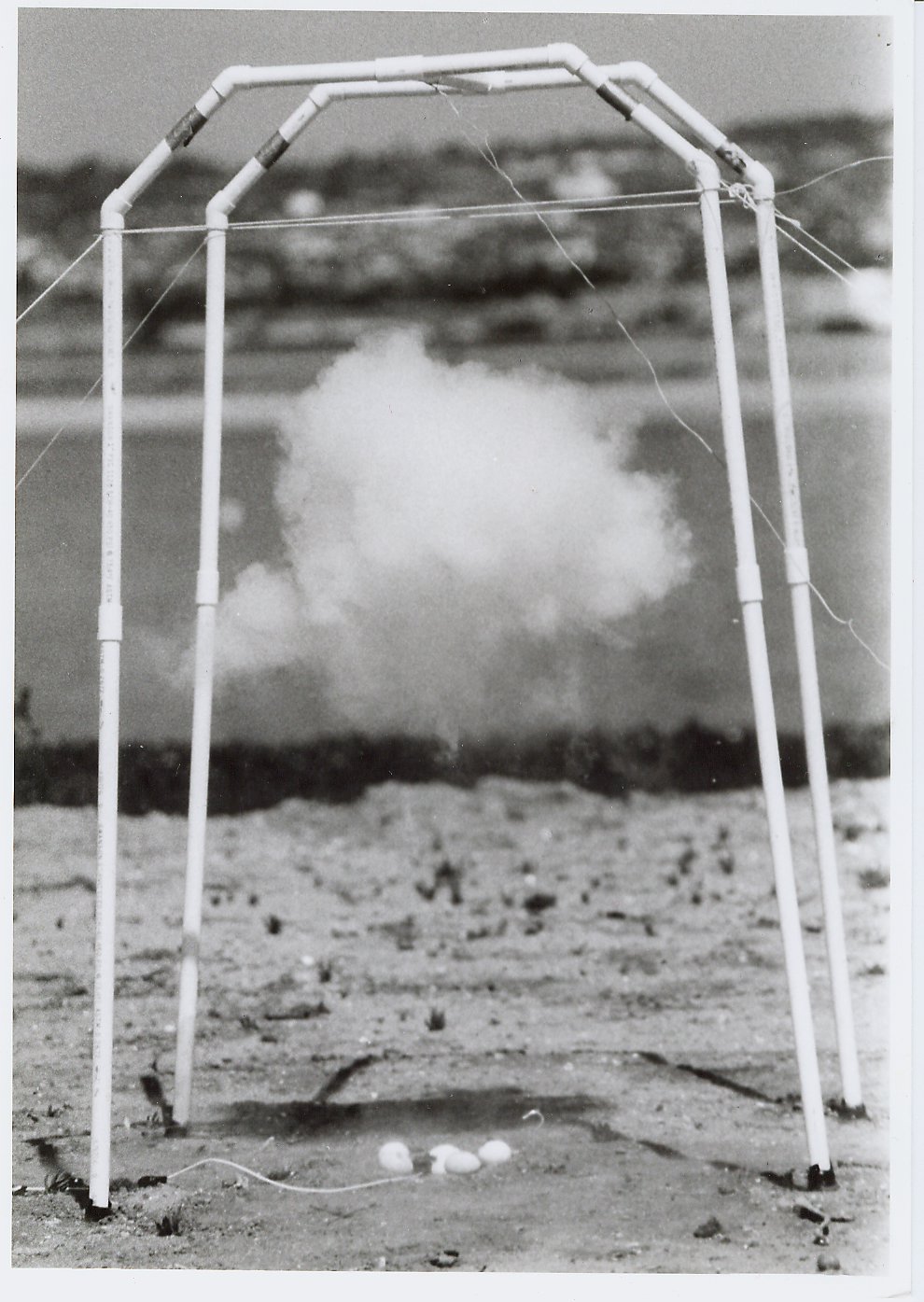
Effect of sonic booms on Sooty Terns' eggs
 It has been proposed that sonic booms caused a mass hatching failure of Sooty Terns in the Dry Tortugas in Florida by cracking the eggshells. This paper investigates this possibility analytically, complementing previous empirical studies. The sonic boom is represented as a plane-wave excitation with an N-wave time signature. Two models for the egg are employed. The first model, intended to provide insight, consists of a spherical shell, with the embryo represented as a rigid, concentric sphere and the albumen as an acoustic fluid filling the intervening volume. The substrate is modeled as a doubling of the incident pressure. The second, numerical model includes the egg-shape geometry and air sac. More importantly, the substrate is modeled as a rigid boundary of infinite extent with acoustic diffraction included. The peak shell stress, embryo acceleration, and reactive force are predicted as a function of the peak sonic boom overpressure and compared with damage criteria from the literature. The predicted peak sonic boom overpressure necessary for egg damage is much higher than documented sonic boom overpressures, even for extraordinary operational conditions. Therefore, as with previous empirical studies, it is concluded that it is unlikely that sonic boom overpressures damage avian eggs.
It has been proposed that sonic booms caused a mass hatching failure of Sooty Terns in the Dry Tortugas in Florida by cracking the eggshells. This paper investigates this possibility analytically, complementing previous empirical studies. The sonic boom is represented as a plane-wave excitation with an N-wave time signature. Two models for the egg are employed. The first model, intended to provide insight, consists of a spherical shell, with the embryo represented as a rigid, concentric sphere and the albumen as an acoustic fluid filling the intervening volume. The substrate is modeled as a doubling of the incident pressure. The second, numerical model includes the egg-shape geometry and air sac. More importantly, the substrate is modeled as a rigid boundary of infinite extent with acoustic diffraction included. The peak shell stress, embryo acceleration, and reactive force are predicted as a function of the peak sonic boom overpressure and compared with damage criteria from the literature. The predicted peak sonic boom overpressure necessary for egg damage is much higher than documented sonic boom overpressures, even for extraordinary operational conditions. Therefore, as with previous empirical studies, it is concluded that it is unlikely that sonic boom overpressures damage avian eggs.
